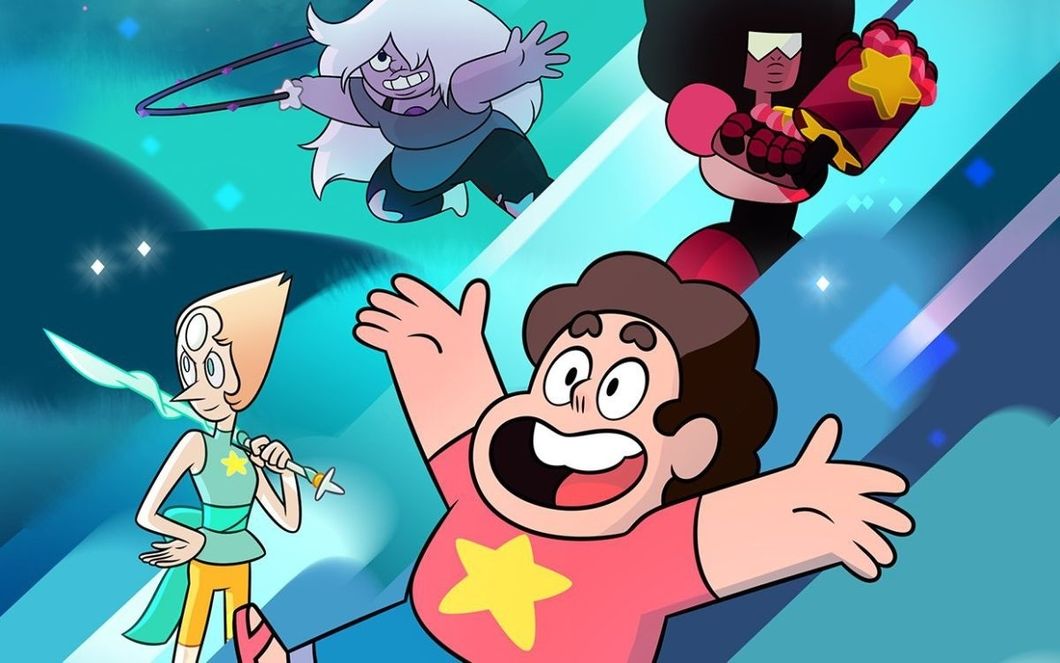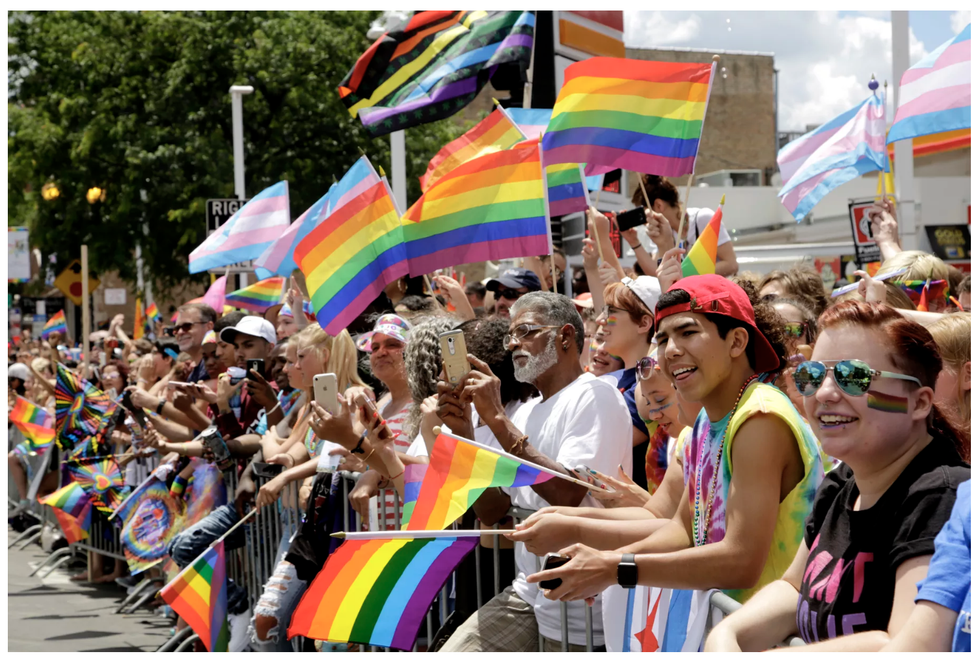On the screen, the princess walks down the aisle, nerve-wracked but excited. It's her wedding day. As she approaches the altar, the princess thinks about how she'll remember this moment for the rest of her life. Her soon to be spouse now stands in front of her and lifts the veil. The princess looks her fiancé in the eye and the princess loves her even more at that moment. Two princesses married at an altar is better than one. The little girl turns off the TV and runs downstairs to tell her moms all about it. Representation in the media is a big part of what shapes us as we grow up and continues to shape us as we grow older. But what happens if one group isn't represented in the media we show to children? Although there are a few good shows featuring LGBTQ+ and gender expressive characters, like Steven Universe, Legend of Korra, and Adventure Time; the media is lacking in its amount of kid's shows featuring LGBTQ+ characters and children should be exposed to different expressions of gender and sexuality.
Queer media for children has only come to light within the last twenty years. Before that, there's sparse evidence of any shows featuring someone breaking gender boundaries or expressing an LGBTQ+ identity. What people seem to be so worried about is that children are being exposed to ideas they cannot or should not comprehend at a specified age. But that's simply not true. As Kate Norquayputs it in her article about why children need to be exposed to queer media, "Usually [censorship] comes back to two main reasons. The first is that if kids are exposed to queer media they will 'lose their innocence' and become queer. The second is that children won't understand these 'complex' ideas so why would we bother to include them?" There's a greater deal of good that representation can do for children than bad. Children aged five to sixteen spend around 6 hours in front of a screen a day. They are bound to come across new information at any given point. How much of that media gives an accurate representation of reality?
There's one point people who are against LGBTQ+ rep in kids shows are most concerned about and that is exposing underage children to sex and stripping away their childhood. What's getting mixed up here is the notion of sex and sexuality. They are completely different things. While sex can be viewed as your biological organs (male, female, intersex) sexuality and gender is how you express yourself (masculine, feminine, androgynous).
According to Joseph Murray, a conservative gay man, LGBTQ+ representation shouldn't be included in kids shows. "Why do we have to expose our kids to such mature themes? Do they not have plenty of time to grow up? Or maybe the point is to make them grow up too soon and that is where I part ways with my community." He also said in a statement, "By representing same-sex attraction... the studio is sending out a message that [same-sex attraction] is normal and natural." It's believed here that a same-sex couple or attraction is not natural, but a choice, and that showing kids affection between two people of the same gender is explicit and will cause them to lose their innocence. Most would disagree. It's been concluded by many that "[t]hose who are gay have no more choice over their sexual preferences than those who are heterosexual." There is no strong argument to support the claim that kid's are being turned gay by watching a gay character or that their innocence is being destroyed. We have plenty of heterosexual relationships in kids shows, so why is an LGBTQ+ person any different.
A recent study at the William's Insititute at UCLA found that "nearly 6 million adults and children have an LGBT parent. There are more than 125,000 same-sex couple households with nearly 220,000 children under the age 18. That's a lot of kids. There are a few fundamental reasons it is beneficial for kids to see LGBTQ+ representation. For example, all those kids that are a part of a same-sex family deserve to be shown. They should be able to point to a TV show made for them and say, "I get that." It also can help kids to understand things like being gender queer and gender non-binary, which is something they might not see in their normal lives yet. It is also sufficient to say, straight is not the only sexuality. And kids who grow up with LGBTQ+ representation will not "turn gay," they will learn to become more tolerant and accepting of people who are. If we are aiming for our media to reflect our real life honestly, then those LGBTQ+ characters should exist.
There are a couple of shows on the air that do a great job of representing the LGBTQ+ community in a subtle and real way. For example, the spinoff series Legend of Korra, based off the Avatar the Last Airbender series, ended with the main character, Korra, and her best friend Asami, getting together in the last episode. The result of the canon relationship was a step in the right direction for a lot of people. But why couldn't there be more? Bisexual characters walking into a beam of light at the end of a series was a step in the right direction, that's true, but why not go further?
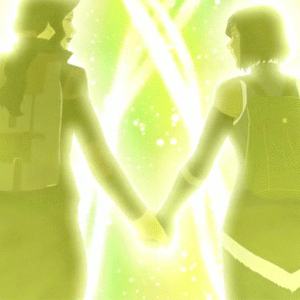
Adventure Time has been in the news lately with its 2018 series finale featuring main characters Princess Bubblegum and Marceline the Vampire kissing onscreen. Executive producer Adam Muto said in response to the last episode, "There's enough to draw a conclusion. I don't want to lay out their entire future—what their relationship will be like after this, and all that—but there are enough pieces there that you can kind of construct what their life will be like going forward. We knew that if we put this in, it would get some attention. But would it be too much attention? … Or would we be downplaying it too much? We knew we wanted to incorporate it, and in the end, you just have no control over how people will remember things." It's a big deal to have the executive producer of a major show acknowledging the relationship between two characters. There are people out there who want to make a difference and incorporate these LGBTQ+ characters into shows, and this shows what most producers of major (even minor) TV shows are trying to now figure out. There's a push for this progression, so how will big names in the industry react?
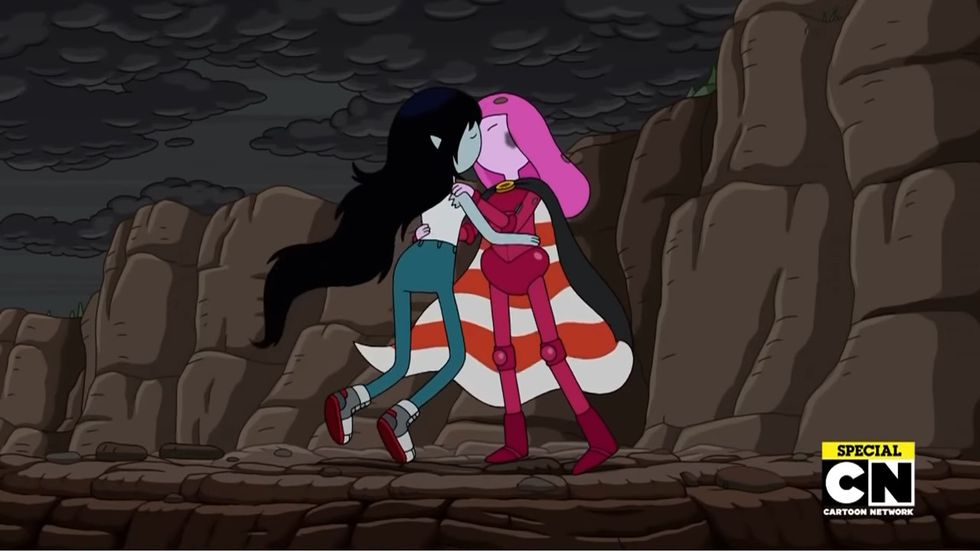
What most LGBTQ+ advocates agree is that one of the most progressive children's television shows is Steven Universe. SU has broken the boundaries again and again, with massive support. It's featured LGBTQ+ unrequited love, non-binary visibility, an unhealthy relationship and breaking out of that, and an LGBTQ+ proposal and marriage on screen. Steven Universe is the story of a half-human half-Gem boy named Steven and his guardians who are Crystal Gems, human-like versions of gems and jewels we know in our everyday lives. The main characters are Garnet (a fusion between the Gems Ruby and Sapphire), Pearl, and Amethyst. What makes SU so revolutionary is how normalized these instances are in the show. It's not some big "coming out" sequence, it's just a part of the world these characters live within. Ruby and Sapphire don't always get along, they unfuse and argue, but they eventually get back together again. Pearl loved Steven's mother, Rose Quartz, but Rose chose Steven's father in the end instead of Pearl, and that's a major plot point in Pearl's character development. Steven and his best friend, Connie, fuse to form a gender non-binary character Stevonnie, who takes on both masculine and feminine traits, at one point growing a bit of stubble and leg hair when stranded on a distant planet, but wearing feminine clothes to parties and the like. There's just so much to love about the progressive nature of the show.
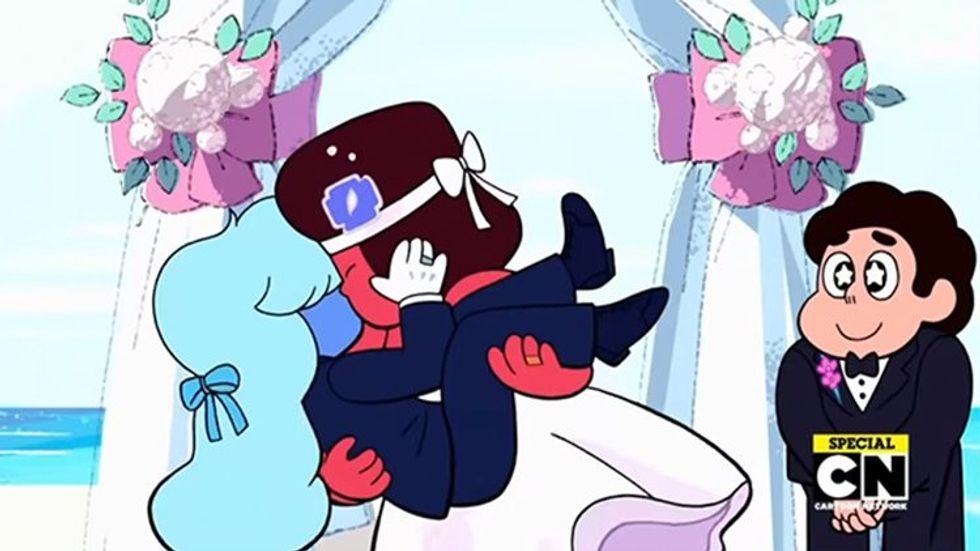
There are plenty of other shows that are starting to break into adding LGBTQ+ representation into their storylines. In the show Clarence, one of Clarence's best friends has two moms, In Star Vs. The Forces of Evil, same-sex couples are seen kissing during a dance in the background. The MacBride dads in Nickelodeon's The Loud House made an appearance recently, and (even though this has been widely debated) Voltron leader Shiro is confirmed as gay and in a relationship with his fiancé, Adam, back on Earth. The show even included a wedding sequence in the last season. Amazon's debut Danger and Eggs is written by trans creator Shadi Petosky who said about the creation of the show, "I didn't realize that writing about LGBTQ+ kids (our show includes trans youth, gay dads and other queer characters) and their freedoms of tomorrow would begin to heal my own traumatic childhood." If shows like these are able to give hope to an older generation and bring truth to the younger one, it's a win-win situation.
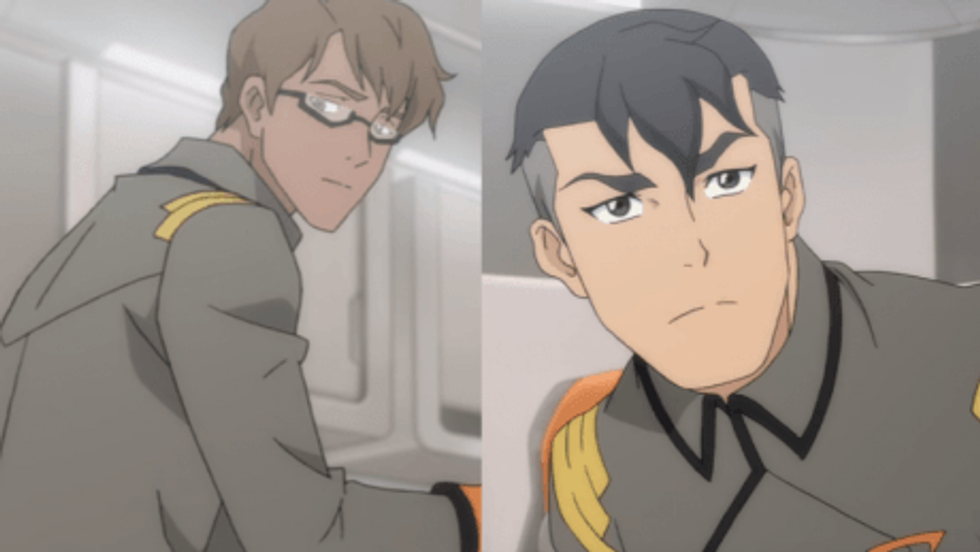
Exposing kids to LGBTQ+ characters, themes, and affection will not negatively affect them. If anything, it will help reflect our world better than it has before. LGBTQ+ people have existed since the beginning of time, and they aren't going to disappear. We need that representation to show kids that they can be who they want and be who they are. They need to know that there are people outside like and unlike themselves, and representation will only help them to grow up understanding the world we live in even more clearly.

